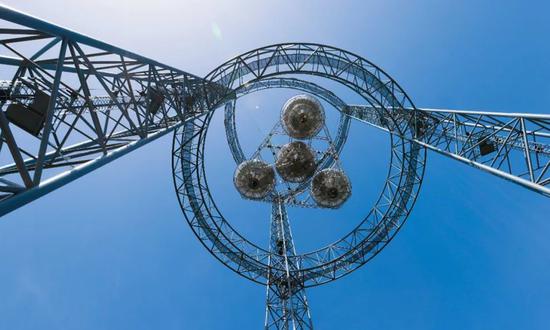
The ground recipient verification system of China's space-based solar power station (Photo/Weibo account of the Xidian University)
China is eyeing completing a gigawatt-level space-based power station, the Global Times learned from the Chinese Society of Astronautics space solar power commission on Sunday.
"Scale-wise, China's first satellite, the Dongfanghong, weighed only 173 kilograms, and our China Space Station, the building of which was completed in 2022, reached 100 tons. Our spacecraft power supply capability has grown from some scores of watts to more than 100, and now surpassing 10,000 watts with the China Space Station. In the future, we are looking at building a space solar power station, which according to the current plan, will possess power capability of 1 billion watts - or the gigawatt level, and the mega project will be operational for commercial use," Li Ming, director of the commission, revealed at a professional forum on Sunday.
According to Li, the future space power station will likely have a scale of more than 10,000 tons, and to reach that goal, China needs to grasp the capability of wireless power transmission technology, which is a must and the greatest challenge in the process.
The professional forum is part of the ongoing China Space Conference in Hefei, capital of East China's Anhui Province. The event opened on Sunday and runs through Wednesday.
Jointly hosted by the Chinese Society of Astronautics and the China Space Foundation, the conference is one of the major activities for the Space Day of China, which is observed on April 24.
Initiated in 2018, the annual conference is committed to building a platform for international academic exchanges, space industrialization cooperation and science popularization.
The concept of collecting solar power in space was popularized by science fiction author Isaac Asimov in 1941. In 1968, Peter Glaser, an American aerospace engineer, wrote a formal proposal for a solar-based system in space.
A space solar power station, though seemingly belonging in the realm of science fiction, refers to the technology to generate electricity from solar energy and then transmit it wirelessly to another target in space or users on the Earth's surface.
Such technology is getting more attention worldwide, as it could contribute significantly to new human endeavors such as powering space systems, addressing climate change, promoting new energy options and development of the space economy.
Wang Li, another member of the commission, explained that feasibility studies into the development and evaluation of space power station is gaining traction in countries and space agencies like the US, UK, the European Space Agency as well as in Japan and South Korea. Many have renewed development strategies and expanded their budgets to explore the field.
For example, the UK envisioned that it could have a demonstrator in orbit by 2035, as more than 50 British organizations, including heavyweights such as Cambridge University and satellite maker SSTL, joined the UK Space Energy Initiative launched in 2021, which "has established a 12-year development plan that could see a demonstrator power plant, assembled by robots in orbit, beam gigawatts of power from space to Earth as early as 2035," according the initiative's chairman Martin Soltau on April 27, 2022.
The US military has also attached great importance to the military use of space power station technology and has been accelerating in-orbit testing and investment.
According to Wang, so far, the US has carried out an X-37B in-orbit power beaming experiment and in the future, the US military is likely to expand the scale of these experiments.
Wang predicted that in-orbit experiment and key technology verification of space-based solar power station power-beaming will be become an emphasis for world space in the next 5-10 years. By 2040, the world could see the first gigawatt-level space solar power station system.
China has achieved huge innovations in the field and made breakthroughs in key technologies, Wang said, noting that "the country has greatly reduced the gap with the world especially in spheres including space power station modularity design, high-efficiency power transmission and control as well as highly-flexible thin solar cells with high efficiency.
Considering the country's high space launch capability, China's demonstration project for a space power station should be first building a 200-ton power station in geostationary orbit with a megawatt-level power generating capability.
"The demonstration space power station will be 216 tons by scale, with a 63,600-square meter cell surface, which is a very practical goal. Its power efficiency will reach 24 megawatts, and its power transmission wave will work at 5.8 giga hertz, with a 153.6-meter-diameter transmitting wire, enabling a 1 megawatt power receiving grid on the Earth's surface," Wang said.
Admittedly, Wang said there will be several challenges in the process, such as achieving super-distance wireless power transmission.
The space infrastructure including the space power station will become a major path for future space development, and will help advance China's "dual-carbon" goal and build the country into a space power, Wang noted.
Wang called for China to speed up and carry out in-orbit technology verification experimentation for the space power technology, saying that as China has become a leading promoter in the building of an international space power station, the country should further strengthen cooperation and exchanges, actively join in the coordination and drafting of international rules and contribute China's wisdom for the development of a space-based power station.
China's research and development into its own space-based power station has accelerated since a proposal obtained state approval in 2013. More than 130 Chinese experts organized by 16 state departments and agencies including the Ministry of Industry and Information Technology, National Development and Reform Commission and the Ministry of Science and Technology, spent a year conducting a feasibility study in 2014.








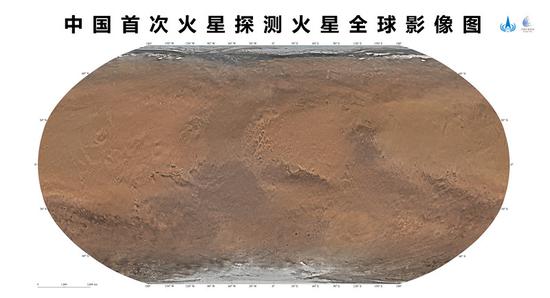



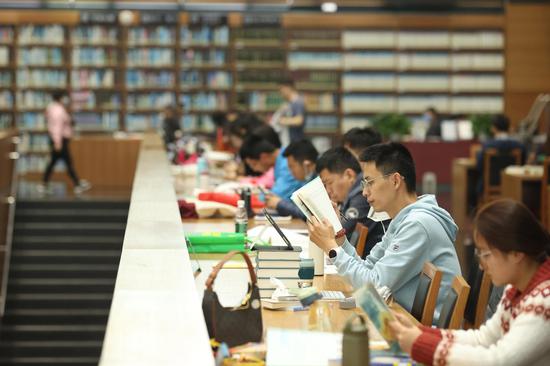


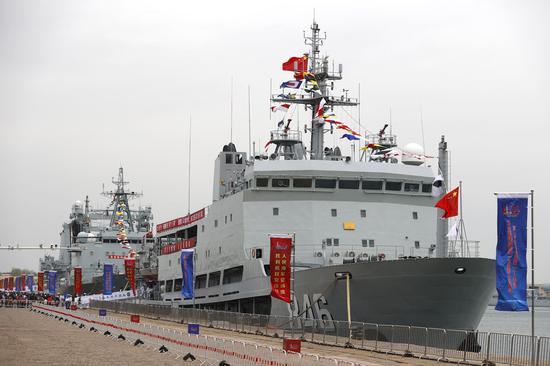



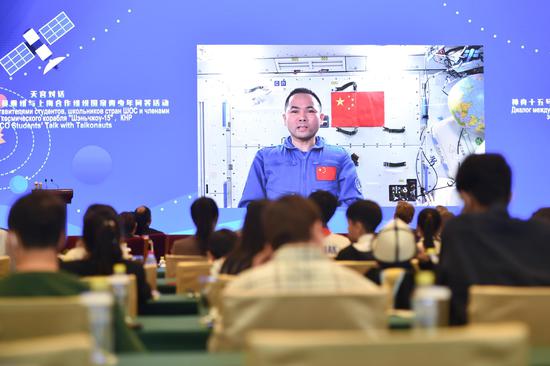



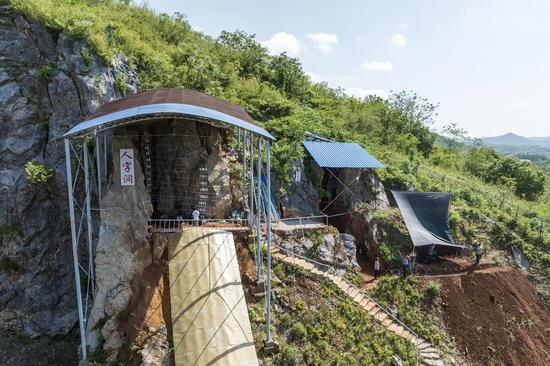
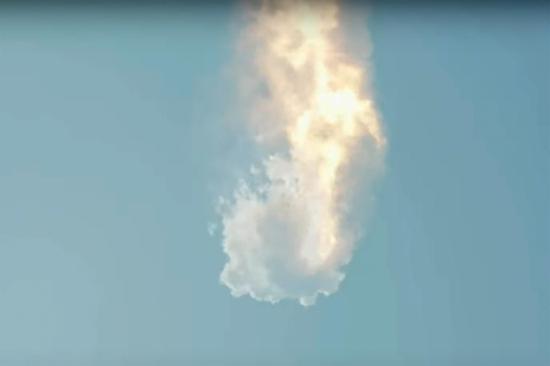
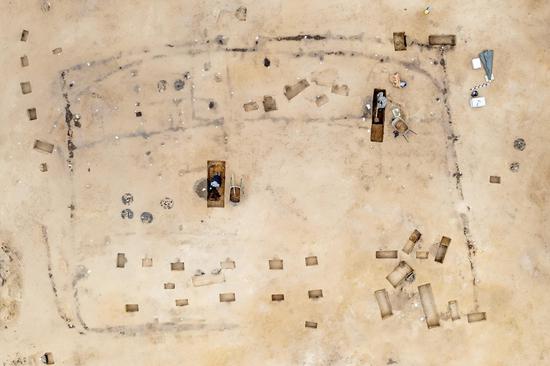


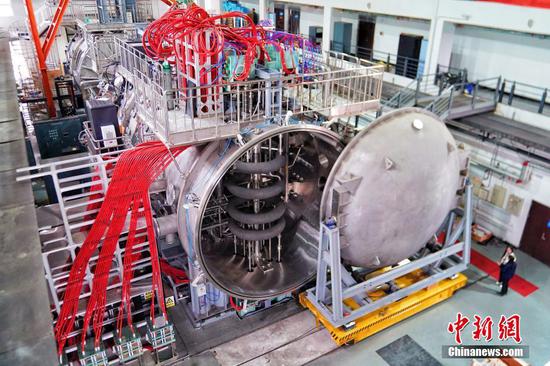






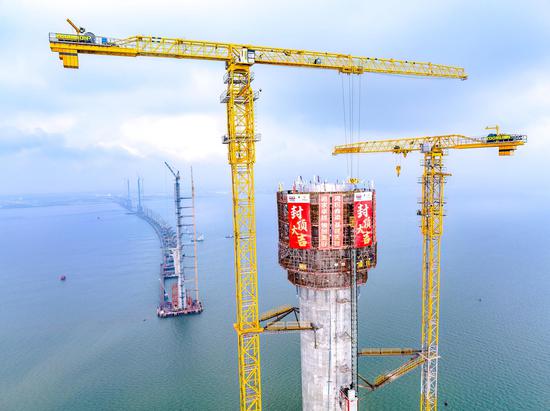














 京公網安備 11010202009201號
京公網安備 11010202009201號